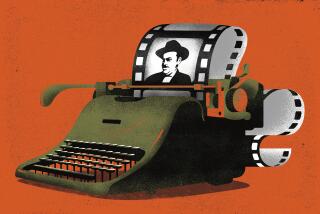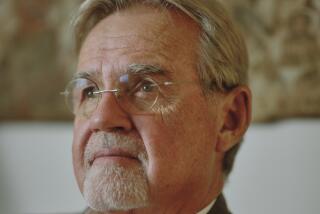A model’s revealing memoir
Aside from the thrill (and chill) of getting naked, there’s not much to nude modeling. You show up, strip, hold very still for a long period, then get dressed, get paid and leave.
And yet for Kathleen Rooney, this experience has become the basis of “Live Nude Girl: My Life as an Object,” a compelling memoir that blends observation, personal revelation and scholarly inquiry.
A poet, professor and author of four other books, Rooney supplemented her income for six years as a nude model in the Boston area.
She’s a smart woman inhabiting a comely body, and she wastes no time taking it off at the top of her book: “The first thirty seconds of nudity are always the most jarring, charged for me and for those who are looking at me. The disrobing is a gentle shock, a surprise, a kind of eyewash, and the instant is electrified, more vivid than those that preceded it and those that will come after.”
Rooney also nails the flip side, the topsy-turvy feeling of being dressed with a nude in your midst. “My nudity might seem unreal,” she writes, “as if it can’t really be happening. So too might my nudity feel hyper-real, as if this person is the most three-dimensional object in space, vulnerable in her nakedness, but powerful in her command of the entire room’s studious and uninterrupted attention.”
As we watch her pose, Rooney examines nude modeling from every angle: historical, sociological and biographical. She explores the territory between female beauty and intelligence, art and pornography, object and observer -- even the border between life and death -- with insight and passion.
Rooney balances the life of “Phryne” -- a modeling sensation of ancient Greece -- with Madonna’s nude photos for Lee Friedlander. She explains Greek versus Judeo-Christian approaches to nudity and highlights the difficulty people have distinguishing art modeling from prostitution. “There it is again,” she notes, “this conflation of selling images of your body with actually selling your body itself.”
All of this is backed up with a smorgasbord of references, from Pliny to Naomi Wolf. But thankfully, Rooney doesn’t shy away from the personal.
She argues for modeling’s legitimacy over lunch with her Catholic mother, trying to explain “that, despite the popular past association of art models with depravity, in the twentieth century, it actually became kind of glamorous.” (Her mother’s response? “It doesn’t sound glamorous, Kathy, it sounds dirty.”)
Her mother is right. Despite its pretensions, it is kind of dirty, and Rooney is frank about the psychosexual kicks. “There is,” she notes, “a subtle perversion at work -- this combination of my naked vulnerability with the impossibility of my actually being touched -- that makes me love modeling so much.”
“Live Nude Girl” is best in these moments, when Rooney allows herself to be truly naked. Despite her intellectual swagger, she is moved to model by a desperate need to be seen; “Bishop Berkeley worried that if he wasn’t looking at the world, it might disappear,” she writes. “I worry that if the world isn’t looking at me, I might.”
Rooney has a pretty girl’s bad habit of finding herself in the gaze of others: “Some people gamble, shop, shoot up, sing in the church choir. Me, I take off my clothes for a nonstop string of strangers and ask them, for a little while, to love me as I love them.”
She uses the strange intimacy between artist and model to fill a void within her.
Of course, her obsession with looks is not vanity but insecurity. Rooney is caught in a love-hate relationship with her body that she can’t escape. Yet even as she uses modeling to prove her worth, she knows what she’s doing. “Art modeling itself, in a way, is an adolescent pastime,” she admits: “you are frozen forever in the process of becoming. You are never fully formed.”
At times, Rooney’s youth makes for an awkward naivete; “I’m nervous about getting old,” she writes, “and feel like I am already, even though I’m just twenty-seven and still get carded, sometimes even at the movies, where nobody gets carded.”
For all her bookish feminism, she hasn’t lived long enough to experience power beyond what her youthful good looks can bring. “What matters, truly,” she writes, “is inner beauty. But I also knew or thought I knew, that that is something ugly people say to make themselves feel better.” It is a whine that makes her otherwise adult and elegant book seem childish at times.
Eventually, Rooney’s modeling career moved into photography and she found herself doing a shoot that bordered uncomfortably on the soft core. But this doesn’t bother her as much as the fact that it is hard to look good in photographs.
“Death,” she tells us, “has been a third party present at every photo shoot I’ve ever done.” She describes the sound of the camera’s shutter as “tiny coffin-lids closing in rapid succession.”
It is here that the great ache of “Live Nude Girl” comes poignantly home: In spite of all the evidence she has gathered, this observant, complex woman can truly exist only in the eyes of her beholders.
More to Read
Sign up for our Book Club newsletter
Get the latest news, events and more from the Los Angeles Times Book Club, and help us get L.A. reading and talking.
You may occasionally receive promotional content from the Los Angeles Times.






